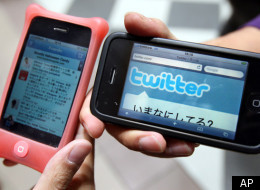The Source of Japan's Disaster from Tsunami |
Japan’s earthquake disaster ranked top 3 recording back to 1900 as one of the most tremulous earthquakes with the magnitude of approximately 9.0 , resulting in 686 death tolls confirmed by the government of Japan (Electric.Co.UK News, 2011).
Top Ten Largest Magnitude Earthquakes
Location | Date | Magnitude2 | |
1. | Chile | May 22, 1960 | 9.5 |
2. | Prince William Sound, Alaska | March 28, 19643 | 9.2 |
3. | Andreanof Islands, Aleutian Islands | March 9, 1957 | 9.1 |
4. | Japan | March 11, 2011 | 9.0 |
5. | Kamchatka | Nov. 4, 1952 | 9.0 |
6. | Off western coast of Sumatra, Indonesia | Dec. 26, 2004 | 9.0 |
7. | Off the coast of Ecuador | Jan. 31, 1906 | 8.8 |
8. | Offshore Maule, Chile | Feb. 27, 2010 | 8.8 |
9. | Rat Islands, Aleutian Islands | Feb. 4, 1965 | 8.7 |
10. | Northern Sumatra, Indonesia | March 28, 2005 | 8.7 |
Source: National Earthquake Information Center, U.S. Geological Survey
In the article by Dorian Benkoil titled ‘How Social Media, Internet Changed Experience of Japan Disaster’ on March 15 (MediaShift, 2011), the author was wrecked when the news of Japan came but to his amazement, the news travelled very quickly due to the contribution of media technology today. Within a few hours after the calamity occurred, news and videos of the incident was updated all over the TV and the internet. Videos taken from Youtube, cell phones and video cameras together with news, status updates and tweets from social networking sites such as Facebook and Twitter were the major contribution for the news spread haste (Protalinski, 2011). As agreed by Pegoraro (2011), after the author woke up, news and updates were all broadcasted in Twitter via phone mobile. News channels had even more contribution from newly recorded videos instead of replaying the same video clip since videos are continuously being updated with a total of 16,000 videos uploaded before the earthquake halt (Blackburn, 2011). Thanks to media technology, people from all over the world are able to actually see and hear what the victims in Japan are going through (Benkoil, 2011).
How News Spread Begin With Mobile Phones Source: Huffpost Tech |
After the massive earthquake, nuclear reactor sectors were affected which caused radiation to spread (Dzieza, 2011). Once again, media technology help spread the word with social sites, online news, and even mobile chatting applications such as Blackberry Messenger (BBM). Media today play a significant role in giving the public a freedom of speech as they provide their experience (Benkoil, 2011).
Media Broadcasting Brings More than News.. Emotions Too Source: World News |
A news as huge as this would definitely be attention grabbing as it involves lives. People today are their own media whereby they are able to spread and inform instead of the media experts alone. I think the media helps in conveying messages from the public as well as leak information from the government. With the increment of multimodality, the public is able to gain a better understanding too. As supported by Walsh (2006), multimodality are becoming more common today and with the variety of modes to inform the public, the better the understanding and the news spread would be.
References:
- Benkoil, D 2011, How Social Media, Internet Changed Experience of Japan Disaster, Mediashift, viewed 4th June 2011, < http://www.pbs.org/mediashift/2011/03/how-social-media-internet-changed-experience-of-japan-disaster-074.html>
- Blackburn, B 2011, ‘Japan Earthquake and Tsunami: Social Media Spread News, Raises Relief Funds,’ ABC News 11 March, viewed 4th June 2011, < http://abcnews.go.com/Technology/japan-earthquake-tsunami-drive-social-media-dialogue/story?id=13117677>
- Clarke, T 2011, ‘Japan Earthquake Results in Many Deaths and Fear of a Radiation Leak,’ Electric Co UK News 14 March, viewed 6th June 2011, < http://www.electric.co.uk/news/japan-earthquake-results-in-many-deaths-and-fear-of-a-radiation-leak-12341958.html>
- Dzieza, J 2011, ‘Japan Nuclear Crisis: Will the Radiation Spread?,’ The Daily Best 15 March, viewed 7th June 2011, <http://www.thedailybeast.com/blogs-and-stories/2011-03-15/japan-nuclear-crisis-will-the-radiation-spread-to-the-united-states/>
- Infoplease, n.d., The Ten Largest Earthquakes Since 1900, viewed 4th June 2011, < http://www.infoplease.com/ipa/A0763403.html>
- Pegoraro, R 2011, ‘Japan earthquake shows how bad news travels fast, and first, online,’ The Washington Post 11 March, viewed 4th June 2011, < http://www.washingtonpost.com/blogs/faster-forward/post/japan-earthquake-shows-how-bad-news-travels-fast-and-first-online/2011/03/11/ABiCG2Q_blog.html>
- Protalinski, E 2011, How news of Japan’s earthquake, tsunami spread on Facebook, ZD Net, viewed 4th June 2011, http://www.zdnet.com/blog/facebook/how-news-of-japan-8217s-earthquake-tsunami-spread-on-facebook/787>
- Walsh, M 2006, ‘The ‘textual’ shift: Examining the reading process with print, visual and multimodal texts,’ Australian Journal of Language and Literacy, vol. 29, No. 1, pp. 24-37.


No comments:
Post a Comment